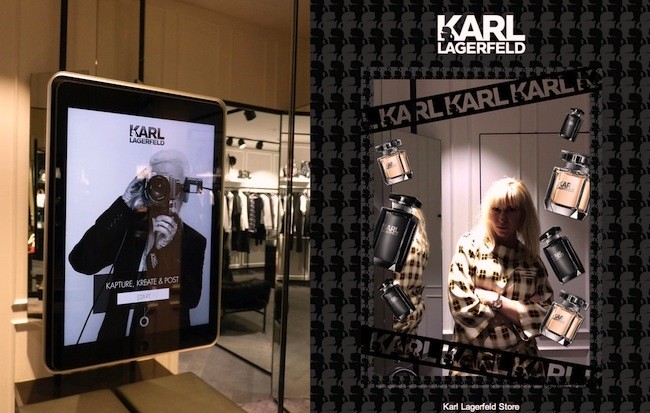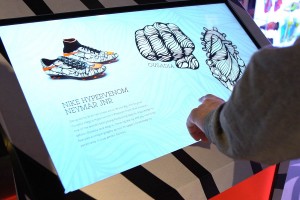
As the latest episode in our series of articles exploring innovation around ‘future retail’, Sophie Walpole provides some highlights of a recent interview with one of the UK’s leading e-commerce pioneers, Eva Pascoe.
IC Tomorrow is looking for proposals from companies with innovative digital ideas to enhance experiences, services and processes across the retail landscape. The winners of the competition will have the opportunity to partner with leading brands in the industry (Tesco, Barclays, Unilever, the Digital Anthropology Lab and the Greater London Authority) and will each receive £35K to trial their proposed solution. The deadline for applications is on the 23rd February at noon. Please visit the competition page for more details. For any further enquiries, please contact Emily Honeywell from Innovate UK or Astrid Ayel from the KTN.
“The Internet will disappear. There will be so many IP addresses, so many devices, sensors, things that you are wearing, things that you are interacting with, that you won’t even sense it. It will be part of your presence all the time.” So said Alphabet chairman Eric Schmidt at the World Economic Forum a few years ago. With this vision in mind, we talked to Eva Pascoe, Digital and Strategy Director at The Retail Practice about the pace of change in retail, where innovation is happening and the barriers to transformation in the UK sector.
Since establishing the world’s first internet cafe, Cyberia, in 1994, Eva has pioneered the digital revolution on the high street, working with leading brands to introduce e-commerce and e-payments and paving the way for a host of new, successful businesses. As we discuss things to come, Eva brims with enthusiasm about how digital is transforming retail but is concerned that lack of universal, superfast broadband is holding the UK sector back from fully achieving these ambitions and meeting consumer demand.
“We must track current progress on broadband rollout” she urges. “Lack of infrastructure is a barrier to growth in the UK now and in two years time this will still be an issue, 13-14% of the country will still be waiting for full broadband access. The government says they will do something but progress is too slow.” In practice this means that many retailers who have developed sophisticated omnichannel strategies are forced to adopt a two-speed approach, creating immersive digital experiences online and in only a few flagship stores while leaving their other stores, largely outside the big cities, untouched. As a result “the state of infra in stores varies wildly across the UK”, explains Eva, which creates an inconsistent offer for customers and leaves some brands lagging behind. “We forget there is a consumer pace of innovation – which is fast – and then B2B which naturally tries to avoid change unless it is absolutely necessary.” Bridging the gap between consumer expectations and the technical realities of investing in digital in-store experiences is a challenge, particularly for national chains.
When it comes to transforming the in-store experience, London’s West End, where Eva led Topshop’s digital transformation, has become the hub for innovation and experimentation as fashion, sports and motoring brands bring converging technologies into their stores. When Karl Lagerfeld opened the flagship store in Regent Street two years ago it was kitted out
with ipad displays and touchscreens allowing customers to photograph their looks and apply Lagerfeld-inspired filters before sharing on social media. “People like this and are excited by it” says Eva “and of course it gives Karl Lagerfeld lots of useful data and insight into what is working and how people wear it.”
Nearby, the Pro-Direct LDN19 sports store has unified their space digitally, allowing customers to personalise their trainers using large displays – “the whole feel is like a gamer paradise”. Perhaps Burberry is the most celebrated example, having pioneered using interactive media in-store since 2012. Now the staff are allowed to control the immersive experience – “it’s a risky strategy to give the control of interactive media to the staff but it works and its very exciting”.
Starbucks’ Reserve Bar in St Martin’s Lane is one to watch – “there is a footfall of curious people who quickly get what is on offer and are intrigued by it.” In the bar new technologies and design have replaced the familiar Starbucks experience of queueing at the counter. The staff roam the bar freely and have tablets where they can take orders. There are fewer tills and if you have the app you can order and pay easily in a more open and relaxed atmosphere. “If it works we will surely see this rolled out” says Eva.
“I’ve seen a lot of failures” says Eva, “a lot…and there and will be more of course but there also big things to come. The technologies are all here now”. Virtual fitting rooms that work both in-store and for customers at home will be big, and Eva feels that the key to success will lie in how stores handle personal, sometimes very personal, data. Processing it in the phone rather than in the cloud, putting the tools in the customer’s hands and allowing them to make the choices should eliminate security issues and build trust. Currently Eva Pascoe is working with European lingerie brand Hunkemolle “whose stores are about to come to the UK. The stores are beautiful stores, they have interactive mirrors and special lighting plus an app which will put virtual fitting at the heart of the experience.”
“Clever things will always make a bit of money but bringing innovation to stores and scaling up is a real issue partly because retailers don’t naturally want to share. Everyone wants their own version of a thing, so no standards get set.. For example, even when a big brand like Topshop want smart mirrors they would only order 600 or so and that is not enough to create growth. If we really want scale then we will need standards.”
Eva echoes the words of Jonathan Chippindale (in Episode 2) that many retailers are still stuck in old ways of thinking and don’t seem to understand that it is not the technology that makes an offer unique, it is the product. The technologies (Internet of Things, Augmented Reality, CRM, gaming engines etc) are commodities and it is how these are brought together – the user experience – that matters. “I suspect everyone is trying to reinvent the wheel so we will get 50 wheels… it will take time to change this” There is perhaps, a need for a space where retailers could collaborate with each other and technical entrepreneurs to accelerate innovation to test and share technologies.
Meanwhile nimble pop up operators are becoming much more part of the scene and these are driving innovation at a local, micro level. For Eva Pascoe this recent phenomenon needs much more support and encouragement since pop-up businesses can bring new customers back to the high street and provide the right environment for entrepreneurs to take risks. The Boxpark collective of start-up retailers in Shoreditch, is an obvious example of this, but Eva wonders if this is a scalable model.
“Right now is the BEST time to be a young retailer. You can start up a business with so little, try things, see what works.” Plus there will always be a desire to touch and feel goods. Eva waxes lyrical about her days as a student when she also ran a market stall selling mohair jumpers and watched people touch the items, consider them carefully and then purchase.
So does this mean that shops as we know them are doomed? “The future of shops is 50/50” Eva maintains. “There will be an inevitable shrinkage as the big names pull out of underperforming stores and long leases and start concentrating on making the experience of fewer, mainly flagship stores more attractive.
“There’s no doubt that some people still like to shop” says Eva but younger “millennials”, however, have very different shopping habits, enjoying social shopping from home with friends, watching live streams or using virtual fitting rooms and deriving satisfaction from sharing on Instagram and Facebook rather than from carrying a branded shopping bag. Millennials visit high street stores far less than their parents once did, they habitually recycle and resell, rapidly turning over items and are happy to buy for novelty. “Young buyers are really very savvy about websites, discounts, vouchers and offers” says Eva. “They wear a lot more clothes as a result as they don’t own them for long.” If this group does visit a store, their expectations of the experience on offer are high.
Broadband roll-out concerns aside, Eva is optimistic about the future for UK retail and sees a world of opportunities ahead. “The UK has always been ahead in digital. We started early – indeed with Cyberia cafes which I subsequently sold – and we have high usage of mobile. Topshop and Arcadia led the way in e-commerce and fashion and this paved the way for newcomers like Asos. Europe is behind – particularly when it comes to logistics – which means we have an opportunity to export brands which look good and have London style. Now we have a lot of knowledge and insight built up over the last decade. It’s no coincidence that this nation of shopkeepers have been quick to harness things like Shopify from our kitchen tables to start up new businesses, it comes naturally to us.”
In case you missed the previous posts in this series, Episode 1 is available here and Episode 2 here.